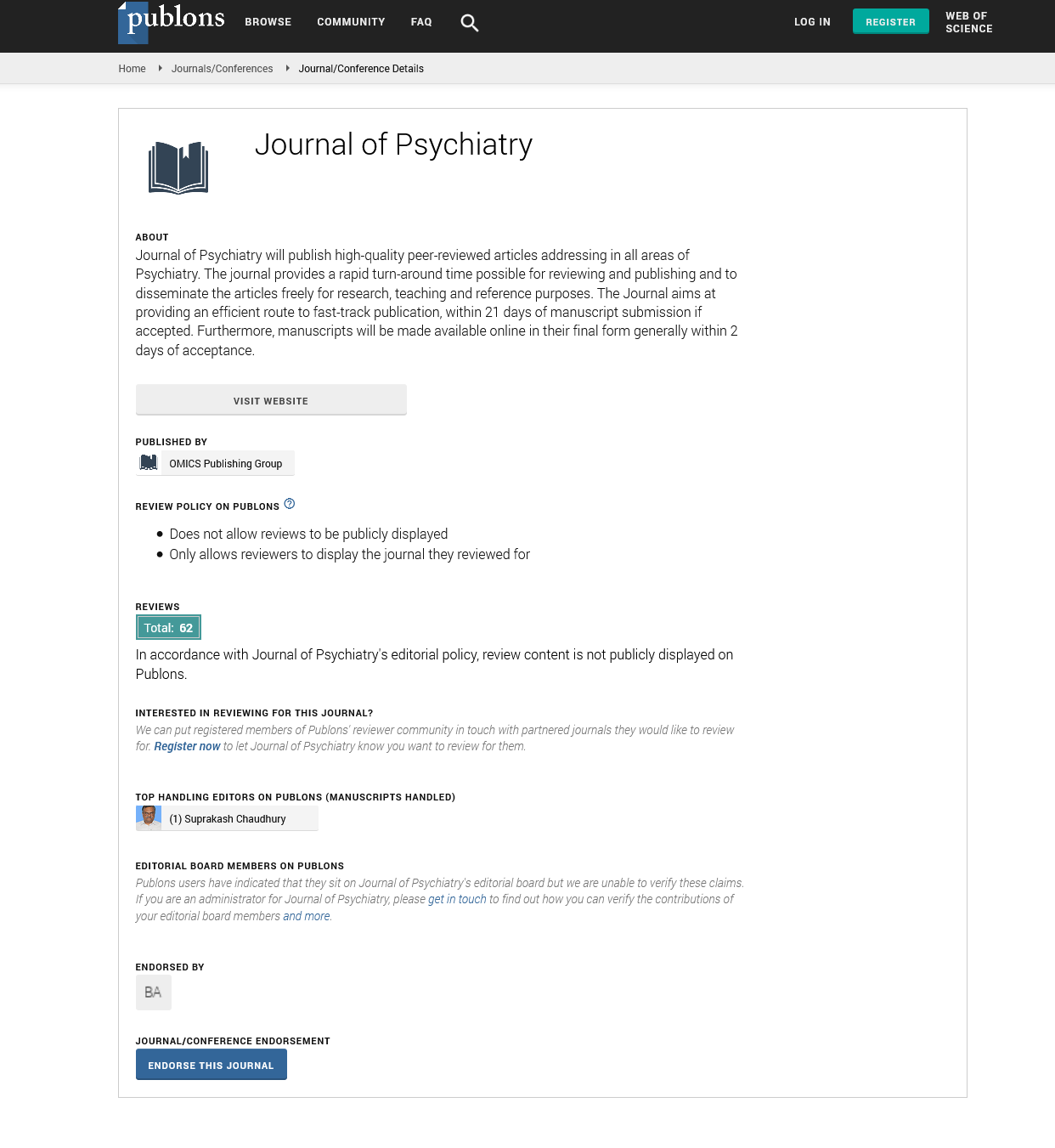Indexed In
- RefSeek
- Hamdard University
- EBSCO A-Z
- OCLC- WorldCat
- SWB online catalog
- Publons
- International committee of medical journals editors (ICMJE)
- Geneva Foundation for Medical Education and Research
Useful Links
Share This Page
Open Access Journals
- Agri and Aquaculture
- Biochemistry
- Bioinformatics & Systems Biology
- Business & Management
- Chemistry
- Clinical Sciences
- Engineering
- Food & Nutrition
- General Science
- Genetics & Molecular Biology
- Immunology & Microbiology
- Medical Sciences
- Neuroscience & Psychology
- Nursing & Health Care
- Pharmaceutical Sciences
A boy with ASD and a complex chromosomal rearrangement - a 9p deletion and an 8q duplication: in the search for candidate genes
6th European Autism Congress
May 27-28, 2024 | Paris, France
Prof. Maria Raquel Santos Carvalho, PhD - Departamento de Genética, Ecologia e Evolução �?? Universidade Federal de Minas Gerais �?? Brazil, Vitor Geraldi Haase �?? TreiniTec, Belo Horizonte, Brazil, Thalita Karla Flores Cruz �?? TreiniTec, Belo Horizonte, Brazil, Lisiane Cantali de Aguiar, physical therapist, Amici, Passo Fundo, RS, Brazil, Vívian Scotti, occupation therapist, Amici, Passo Fundo, RS, Brazil, Graciela Rek de Vargas, speech therapist, Amici, Passo Fundo, RS, Brazil, Renato Guimarães Loffi �?? TreiniTec, Belo Horizonte, Brazil
Scientific Tracks Abstracts: J Psychiatry
Abstract:
Statement of the Problem: A 5-year-old boy was investigated due to developmental delay, autism spectrum disorder (ASD), absence of speech, hypotonia, feeding problems, and hypospadias. The aCGH identified a complex rearrangement, constituted of a 12,737Kb microdeletion, del9p24.3-p23 (chr9:205069-12942742, CRCh37) and a 13,195 kb microduplication, dup8q24.22-q24.3, (chr8:133099029- 146294241, CRCh37). Individually, both del9p24.3-p23 and dup8q24.22-q24.3 are rare conditions. This is the third report of this complex rearrangement. Here, we report a prioritization study developed to identify which genes in these two intervals would explain the clinical manifestations identified in this boy. Methodology & Theoretical Orientation: Gene list for both chromosomal intervals were extracted from UCSC Genome Browser. Prioritization was conducted in VarElect, with the following phenotype combinations: autism; autism AND hypospadias; speech; aphasia; among others. Descriptions of genes ans associated conditions were searched in GeneCards, MalaCards, OMIM, and PubMed. Findings: A small number of genes on the 9p-deleted interval explained the set of phenotypes: SMARCA2, DOCK8, KDM4C, JAK1, DMRT1-3, PTPRD, VLDLR, KANK1 and DOCK8-AS1. On the 8q duplicated interval, genes prioritized included TRAPPC9, RPL8, PUF60, ZFTRAF1, TONSL, CYP11B1, PEG13, ADGRB1. Higher VarElect scores were observed for the genes in the del9p24.3-p23 interval. The Nicolaides-Baraitser syndrome, caused by mutations in SMARCA2, explains the complete set of clinical neuropsychological manifestations observed in this child. However, hypospadia has not been described in this condition. Sex-differentiation abnormalities have been described in association with DMRT1, DMRT2 and DMRT-3 genes, from 9p, affecting the function of the androgen receptor (AR) and androgen sensitivity. Interestingly, CYP11B1, on 8q, is a major regulator of steroid hormone levels. Conclusion & Significance: Prioritizing results suggest a contiguous gene syndrome with a larger contribution of the del9p24.3-p23. The analysis conducted here helps understanding this complex rearrangement.
Biography :
Prof. Maria Raquel Santos Carvalho ,She holds a degree in Medicine from the Pontifical Catholic University of Rio Grande do Sul (1981), a master’s degree in Genetics and Molecular Biology from the Federal University of Rio Grande do Sul (1987) and a PhD in Human Biology - Ludwig-Maximilian Universität München (2003). She is currently Associate Professor IV at the Federal University of Minas Gerais. He has experience in the field of Genetics, with an emphasis on Human and Medical Genetics and Animal Genetics. Full Advisor of the Postgraduate Course in Genetics at UFMG, master’s and doctorate. President of the Minas Gerais region of the Brazilian Society of Genetics (2012-2014). Research Productivity Scholarship Level 2, from Brazilian Research Council, CNPq (2019-2022). ORCID: 0000-0002-1744-448X

